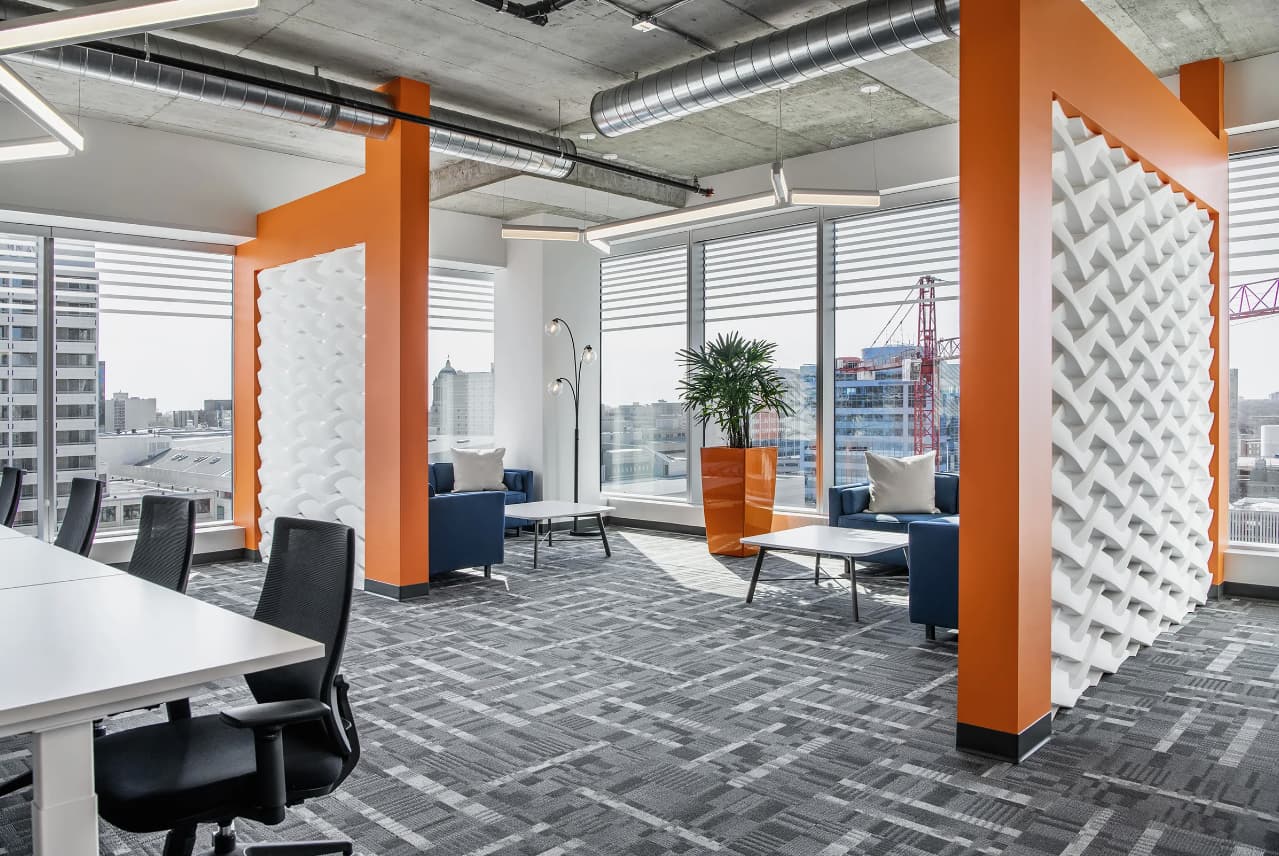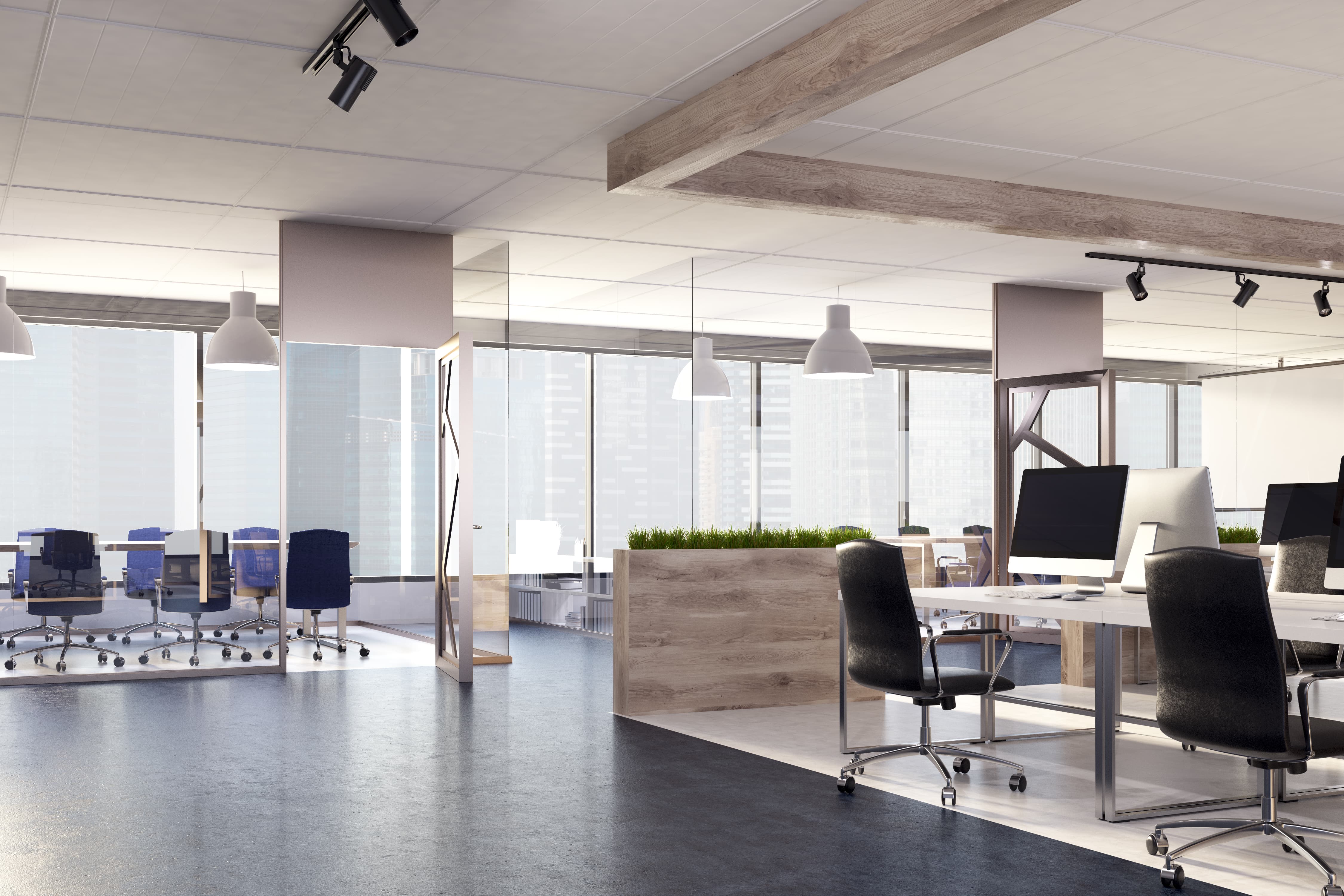The concept of activity-based working (ABW) was first developed by Erik Veldhoen, author of the book The Demise of the Office. It refers to a workplace concept that gives workers a choice of settings for the various workplace activities they are required to do as part of their job. Instead of only allowing individuals to performs their tasks in one area, ABW allows employees to choose from a variety of settings that is best suited to the particular task they are performing at that time.
In our last article, we talked a lot about the pro and cons of hot-desking, but it’s important not to confuse ABW with hot-desking which is based around the idea of a system which involves multiple employees sharing the same physical workstation during different parts of the day.
While ABW does share some features with hot-desking and other workplace concepts, it focuses on the experience the employee has while in their work environment.
While ABW is a relatively new concept, many companies are implementing it in response to emerging trends that are directly impacting many workplaces.
Sustainability, reducing real estate costs, advances in technology, globalization, and management culture are some of the most notable drivers of this change. Instead of providing desks to every worker that lies empty for much of the day, activity based working offers a work environment that provides employees with flexible shared spaces that help them to manage the responsibilities better and allows them to be more productive.
What is activity-based working?
At the core, activity based working is about providing people with choices while reducing unused space. Studies show that at any given time, approximately 30% of desks are sitting empty.

To eliminate this vacancy and wasted space, activity-based workplaces reject the idea of assigned desks. Each workspace is shared and serves multiple purposes throughout the day.
Since one setting is rarely ideal or appropriate for each of the tasks a person is expected to complete, the idea of utilizing several areas makes sense. Businesses must determine what tasks use most of their staff’s time and the space required to complete them.
And while employees don’t have an assigned office, they are not displaced or unsettled. Rather, they enjoy the luxury of choosing how, where and when they work, resulting in increased productivity and workplace satisfaction.
Guiding principles of ABW
Activity based working is dynamic; it isn’t a one-size-fits-all approach. The methodology can be tailored to each business, its staff and clients. But at the core, activity based workplaces:
1. Think outside the box. Whenever possible, walls and closed doors are be eliminated.
2. Provide flexibility and freedom. Skilled employees deserve trust and the responsibility to do their job without being micromanaged.
3. Stimulate teamwork. Collaboration leads to progress.
4. Attract the most qualified workers.
5. Strive for sustainability. More compact spaces naturally make a smaller impact on the environment.
6. Cut unnecessary expenditures.
What does an activity based workplace look like?
Activity based offices include a balance of comfort and style. An appealing design ensures people want to come to work, while ergonomic furniture ensures they want to stay.
ABW offices incorporate a range of workspaces, typically including:
- Team desks
- Quiet rooms to allow for phone calls, one-on-one conversations and private work
- Stand-up tables
- Brainstorming areas
- Lounge
- Meeting rooms
- Conference rooms equipped with multimedia equipment
In addition to the physical requirements of a successful ABW space, a fast wireless network and quality technology is necessary to allow for a mobile workspace. Without the technology, activity based working isn’t possible.
Who is best served by an activity-based workspace?
When this methodology was born in the nineties, it attracted companies focused in the financial, marketing and technology sectors. However, ABW is no longer a novel concept intended only for information-based businesses; it’s the way of the future.
Stats Canada recently showed that baby boomers make up 27% of our population. This means that a massive shift in the workforce has already begun to take place. Traditional-minded employees are retiring en masse, making way for Gen X and Y, and eventually, the Millennials.
This shift is great news for corporations considering a change in how they operate. The younger demographic is ideally suited to activity based working. Constantly advancing technology, collaborative work environments and transparency aren’t new ideologies these generations needs to adopt; this way of life comes naturally to them.
That being said, age is just a number. Companies with creative, adaptable staff and management experience success in activity based work environments, regardless of the demographic of its employees.
There are many benefits and challenges when it comes to activity based working for both companies and their employees. At the end of the day, it’s about pairing individual employees and specific work tasks to work environments and technologies that support those activities in order to enable greater productivity and effectiveness.




